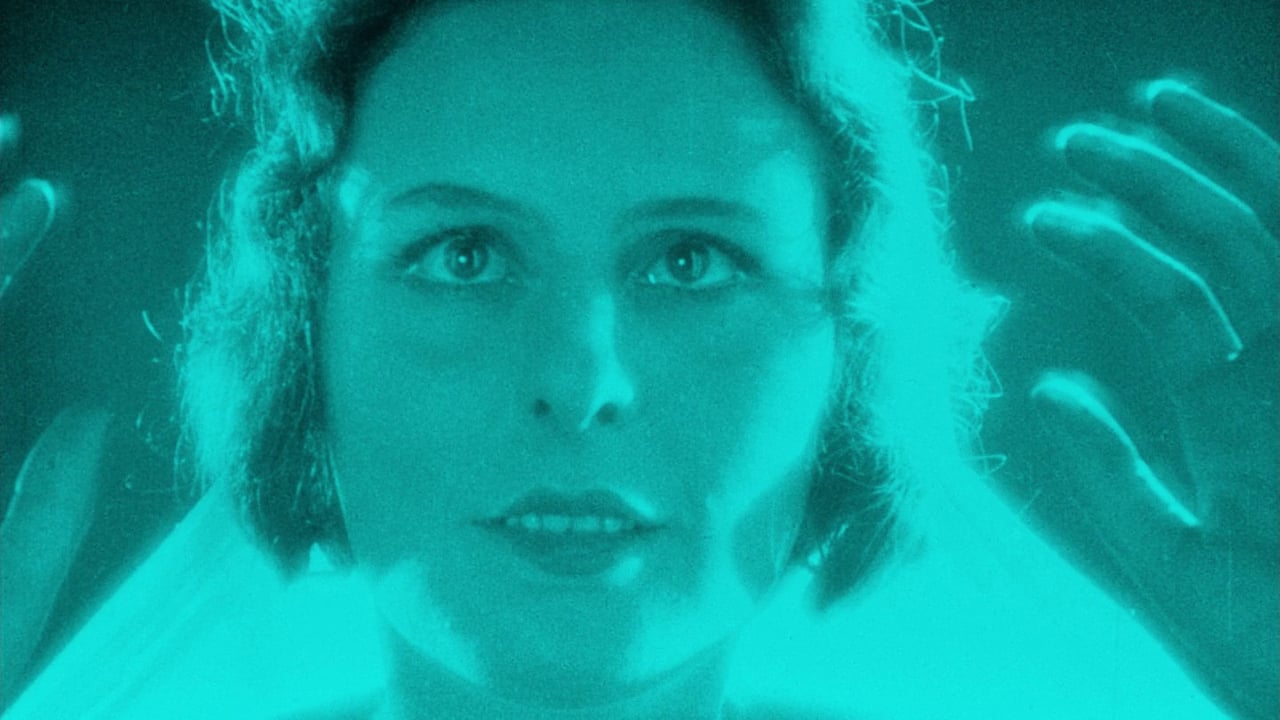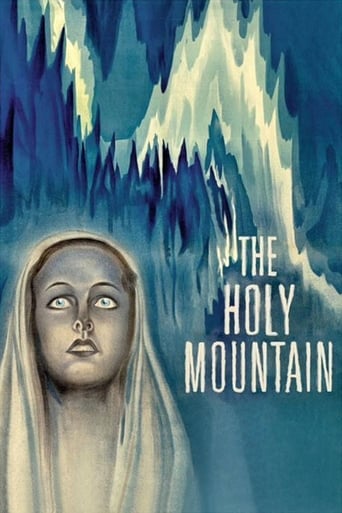

I was really looking forward to the Kino DVD of The Holy Mountain (1926) which I assumed would feature the original music score by Edmund Meisel. Instead of the grandeur of Meisel, however, Kino treats us to a monotonous, half-baked and often totally inappropriate offering from Aljoscha Zimmerman. Admittedly, even Meisel may have found it difficult to set Leni Reifenstahl's repetitive posturing (you couldn't call it "dancing") to music, but even a dim reflection of the stark, deadly beauty of the Swiss and Bavarian Alps should have been possible. Not so, however. The score manages to undermine the luster of everything it touches. An oft-told noirish tale of a love triangle twisted to the point of dementia, The Holy Mountain serves not only as a scenic backdrop but as a murderous participant. (The Kino DVD rates 10/10 for its superlative preservation of the original's color-tinted photography, but somewhat less for the failure of its music score).
... View MoreThe dancer Diotima (Leni Riefenstahl) meets the engineer and skier Karl (Luis Trenker) in his cottage in the mountains and they fall in love for each other and have a love affair. When Karl's young friend Vigo (Ernst Petersen) meets the dancer after a presentation and she gives her scarf with a smile to him, the infatuated Vigo mistakenly believes she is in love with him. Karl sees Diotima innocently caressing Vigo and he believes that Diotima is betraying him with his friend. Karl decides to commit suicide and invites Vigo to climb the dreadful Santo Mountain North face during the winter thaw with him. His best friend joins Karl in a tragic journey."Der Heilige Berg" is a melodramatic and tragic story of a triangle of love among a dancer that loves the sea; a skilled skier and engineer that loves the rock; and his young friend that loves the dancer. The plot is absolutely naive in 2010, but after all this is a 1926 film when the society had other moral concepts. The infamous Leni Riefenstahl, who directed the Third Reich's propaganda for Hitler one decade later, performs the dancer and pivot of the tragedy. Her dance is weird and clumsy but this is a silent movie and the viewer never knows what she was listening while dancing. If the romance is not interesting in the present days, the cinematography and the camera work are stunning considering the size, weight and technical resources of the equipment in this period. All shots outdoor were actually made in the mountains, including the ski race and the scene on the cliff, in the most beautiful parts of the Alps over the course of one and half years. My vote is seven.Title (Brazil): "A Montanha Sagrada" ("The Holy Mountain")
... View MoreAfter a scene in Herr Wilhelm Prager's "Wege Zu Kraft Und Schönheit" (1925), "Der Heiliger Berg" was the first film of Dame Leni Riefenstahl as a lead actress. It was a film written exclusively for her by Herr Arnold Fanck according to Dame Riefenstahl memoirs, a book that includes other partial and conceited memories from a time in the mid-20s when she was a famous dancer.The film includes a prologue in where we can see Dame Riefenstahl dancing or something like that, well knowing that Germans, even the aristocrats, had a particular sense of rhythm more suited to military parades with plenty of goose steps, you will be able to understand the reason why Dame Riefenstahl was a famous dancer during the Weimar era.Herr Arnold Fanck, as a director was noted as the creator of one of the most successful and peculiar German film genres: the mountain films. (Actually, Herr Fanck was a famous director at that time thanks to mountain documentaries; "Der Heilige Berg" was his first film that includes a plot). In these films nature and its consequences are always centred on the lead character of these beautiful films with their superb cinematography and vigorous editing. Men and women have to fight against the savage elements in what it is finally an unequal and difficult battle. That's the most important aspect of the film, those incredible beautiful nature shots because Dame Riefenstahl as a dancer/actress or Herr Trenker (the male lead actor) as an actor are not very impressive, or in the strict German sense, they are depressive."Der Heilige Berg" shows different nature's conditions and contradictions. In the first part of the film, our heroine, Diotima the dancer, is immersed in bucolic, idealized and calm mountain landscapes full of flowers, shepherds, people skiing and all that kind of strange things. In the second part of the film the beautiful mountain landscapes will transform to a dangerous and inaccessible place in which the snowfalls and avalanches will prevent the rescue of two of Diotima's lovers who are isolated at the mountaintops. In many occasions during the film, some scenes are prolonged unnecessarily due to the excessive emphasis on mountain scenery that Herr Fanck wanted; duplicate shots diminish the film's action in a Herr Trenker oeuvre whose inner intention is to be a tribute to nature and the Teutonic mountains.And now, if you'll allow me, I must temporarily take my leave because this German Count must to climb the aristocratic ladder.Herr Graf Ferdinand Von Galitzien http://ferdinandvongalitzien.blogspot.com/
... View Morethe first thing i have to mention is the transfer of the film. usually physical film quality is not of primary importance to me - but if (as in this case) there are a disturbing number of frames missing, your viewing pleasure is seriously impaired. here barely one minute goes by that the continuity within the same shot doesn't jump. having said that - the transfer is somewhat recent, restored and licensed from the murnau-stiftung, so i guess it has to be the best version available (i own the eureka edition). now ... the film is certainly not a masterpiece, but the sports scenes still can excite. so can the mountain and nature photography, which is rather splendidly done (they didn't even shy away from pointing the camera straight into the sun - something one doesn't see too often in movies). and this was about all the good there is for me. starting with the awful German text plates - in which even the basics of human behavior (of the characters) are displayed as requiring superhuman efforts/emotions ... the subconscious prelude to war i guess. the English subtitles thankfully use much better language - quite elegant in that too. also there is no humor in the film. one might smile about the idiotic script every now and then (nowadays), but this was certainly no intention back when it was filmed. conclusion: if you like silent movies, winter sports and history it might be worth a look, but not much else is there to be found.
... View More